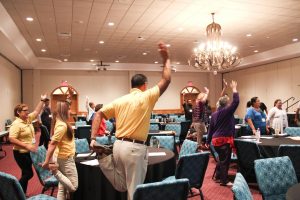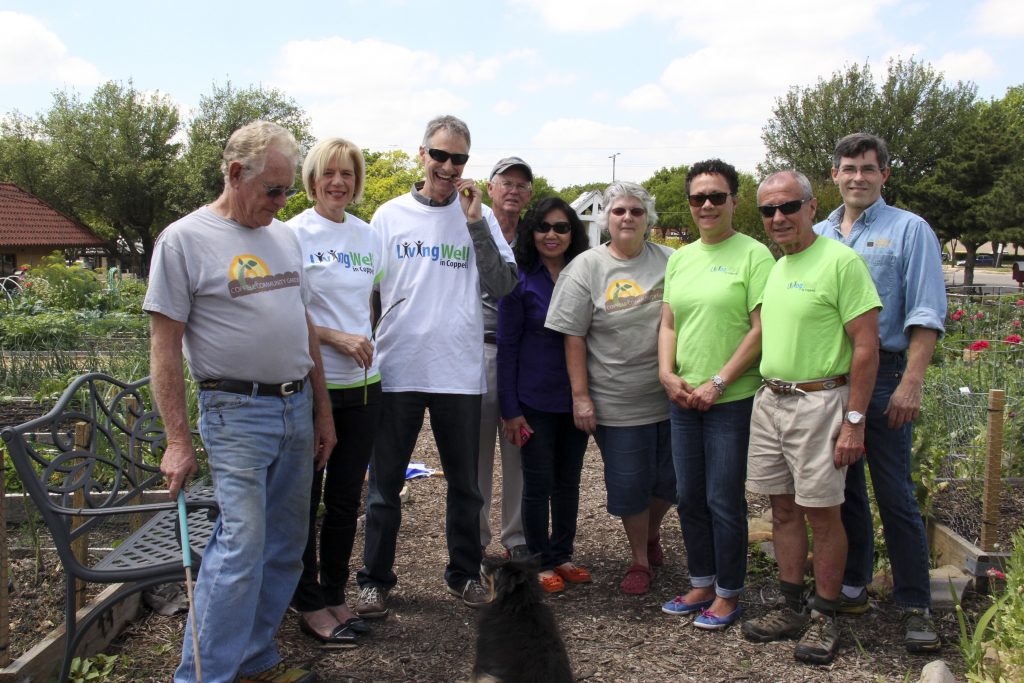The Blog
What is a Culture of Health? What Does it Take for a Community to Get There?
At IT’S TIME TEXAS, our goal is to empower Texans to lead healthier lives and build healthier communities. In order to build those healthier communities and lives, we first have to have an idea as to what a healthy living environment actually looks like! We recently released a white paper, Building a Culture of Health in Texas, that explores the conversation started by the Robert Wood Johnson Foundation around how to create a “culture of health” across the United States. So what does a culture of health look like? We can draw straight from the white paper to begin understanding this question.
Education
 One major step that can be taken toward creating a healthy living environment is making the knowledge of healthy eating habits easily available. Every persons’ specific dietary needs, and their own understanding of what those needs are, differ. So, one “healthy diet” cannot be prescribed for an entire population. Rather, people must be offered the chance to learn what their diet needs to consist of on an individual level so as to attain optimal health. If this education begins with children, then those children will grow up knowing what diet is best for them, leading them to grow into healthy adults. It’s also important to keep in mind that while every person is different and requires an individualized approach to healthy eating, there are certain recommendations that can be made across the board and communicated more clearly, like the importance of availability and affordability of fresh fruits and vegetables, and avoiding processed/packaged food, and sugary drinks.
One major step that can be taken toward creating a healthy living environment is making the knowledge of healthy eating habits easily available. Every persons’ specific dietary needs, and their own understanding of what those needs are, differ. So, one “healthy diet” cannot be prescribed for an entire population. Rather, people must be offered the chance to learn what their diet needs to consist of on an individual level so as to attain optimal health. If this education begins with children, then those children will grow up knowing what diet is best for them, leading them to grow into healthy adults. It’s also important to keep in mind that while every person is different and requires an individualized approach to healthy eating, there are certain recommendations that can be made across the board and communicated more clearly, like the importance of availability and affordability of fresh fruits and vegetables, and avoiding processed/packaged food, and sugary drinks.
Awareness & Utilization of Health Resources
In addition to understanding healthy eating habits, the population needs to be made aware of what resources are already available that could help them live healthier lives. During the compilation of the white paper, we learned that “80% of those surveyed were unaware of parks near their homes”. Throughout Texas, many communities have parks and trails where residents can be safely physically active. But if residents are unaware of those healthy public places, what good do they do?
Availability & Affordability of Health Resources
 While knowing about and using local health resources like parks, playgrounds, and trails is crucial to cultivating a culture of health, the fact is that those resources do not exist and are not safely accessible in every Texas community. As cited in the white paper, “A wealth of research shows that those who live in areas with high levels of poverty, even if they are not impoverished themselves, lack access to good schools, health care, good jobs, and a host of other resources fundamental to health and well-being”. In any environment where health is truly a priority, these barriers to health resources must be overcome. Good healthcare, safe places to be physically active, and fresh, nutritious food must be easily accessible to all, regardless of income. We believe everyone, from elected officials, to local businesses, to schools, to faith-based organizations, can and must play a role in amplifying the voices of those facing barriers to health, and creating healthy opportunities for their entire community.
While knowing about and using local health resources like parks, playgrounds, and trails is crucial to cultivating a culture of health, the fact is that those resources do not exist and are not safely accessible in every Texas community. As cited in the white paper, “A wealth of research shows that those who live in areas with high levels of poverty, even if they are not impoverished themselves, lack access to good schools, health care, good jobs, and a host of other resources fundamental to health and well-being”. In any environment where health is truly a priority, these barriers to health resources must be overcome. Good healthcare, safe places to be physically active, and fresh, nutritious food must be easily accessible to all, regardless of income. We believe everyone, from elected officials, to local businesses, to schools, to faith-based organizations, can and must play a role in amplifying the voices of those facing barriers to health, and creating healthy opportunities for their entire community.
Fostering “Sustained Behavior Change”
Finally, and perhaps most importantly, any attempts to cultivate a healthy living environment must be realistically sustainable. This is most likely to happen when there are, “one or more local champions who will rally resources and ensure that implementation occurs and is sustained over time”. The likelihood of a culture of health both catching on and sticking is also dependent upon which issues the healthy culture is connected to when it is being promoted or communicated to a community at large. We humans are driven by emotion and will be much more motivated to make healthy choices if we understand how much better those choices will make us feel, how they will save us money, and how much longer we will be around for our families, than if we’re presented with a long, looming list of statistics and chronic diseases. If there is a local community leader, or better yet, multiple community leaders, willing to take charge of fostering a healthy living environment in their community, and if the growth of that healthy living environment is connected to factors other than health, the chances of that culture of health flourishing increase dramatically.
So, a community with a culture of health educates the population about healthy eating, utilizes and increases awareness of existing resources, makes health resources available to and affordable for all, and fosters the continuation of all of those behaviors. A healthy living environment is also flexible and adaptable depending on the specific needs of the community, because all communities are different! To get a deeper understanding of what makes for a healthy living environment, and how to overcome the various barriers to a culture of health, be sure to read Building a Culture of Health in Texas, and its corresponding case studies. Use the white paper as the basis for a discussion in your city or town, and share your questions, thoughts, and ideas on social media with the hashtag #HealthierTexas!
